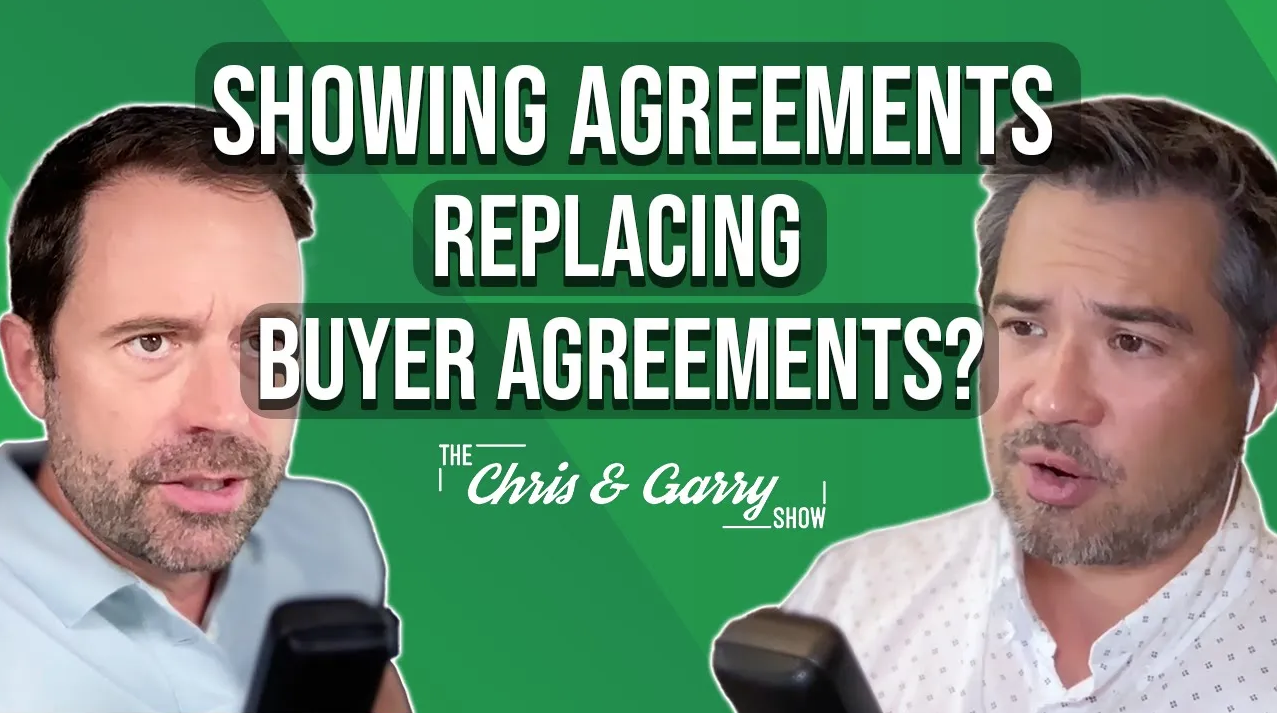
What are Showing Agreements?
A showing agreement is a document that allows real estate agents to show a home to a potential buyer without committing them to a long-term exclusive relationship. Think of it as a "first date" rather than a "marriage" contract. This type of agreement has gained traction recently, especially in states like Florida, where state associations are rolling out standardized showing agreements. This trend comes in response to the evolving rules around buyer representation and the need for more flexibility in agent-client relationships.
Why Are Showing Agreements Gaining Popularity?
The real estate market is shifting. With the increasing number of online leads and more potential buyers searching for homes independently, agents are faced with a new challenge: how to convert these leads into clients without scaring them away with long-term commitments. Traditional buyer agreements often feel like too big of a step for someone who is just starting their home-buying journey. For example, a potential buyer might see a home online or drive by a "For Sale" sign and call the listing agent out of curiosity. At this stage, they might not be ready to sign an exclusive buyer agreement. They just want to see the property!
In the past, agents could use the process of showing homes to build trust and demonstrate their value before asking for a signed buyer agreement. However, recent rules in some markets require some form of agreement before an agent can start showing homes. This change has made showing agreements an attractive solution for many agents.
The Benefits of Showing Agreements
Christopher Dean, a top-producing agent with the Monica Foster Team at eXp Realty in Houston, Texas, has been a pioneer in using showing agreements. His team, which heavily relies on online leads, faced the challenge of how to engage potential buyers who weren't ready to sign an exclusive buyer representation agreement right away. By introducing showing agreements, they've created a way to qualify leads and build trust without losing opportunities.
Here are a few key benefits of using showing agreements:
1. Low Commitment for Buyers: For new buyers who are hesitant about signing a long-term contract, a showing agreement is a less intimidating step. It provides a way for agents to showcase properties without locking the client into a full buyer representation agreement.
2. Qualifying Leads: A showing agreement serves as a tool to gauge a buyer’s seriousness. If a buyer is not willing to sign even a simple showing agreement, they might not be committed enough to merit the agent's time and effort.
3. Building Trust: Showing agreements allow agents to demonstrate their value through the home-showing process. Agents can build rapport and trust with potential buyers, which can later lead to signing a full buyer representation agreement.
How to Use Showing Agreements Effectively
If you’re considering incorporating showing agreements into your practice, it’s essential to have a strategy. Here are some steps to help you make the most of showing agreements:
1. Explain the Process Clearly: Make sure potential clients understand the purpose of a showing agreement. It’s not about locking them in; it’s about ensuring that everyone’s time is respected and that they get the best service possible.
2. Set Expectations: When using a showing agreement, clearly outline what comes next. Explain that this is just the first step in the process and that eventually, a more comprehensive buyer representation agreement might be needed when they are ready to make an offer.
3. Communicate Your Value: Use the showing process as an opportunity to showcase your expertise. Share market insights, provide valuable advice, and be attentive to their needs. The goal is to build a strong foundation of trust so that when it’s time to sign a more extensive agreement, they feel confident in choosing you.
4. Blend with Traditional Methods: For clients who come through referrals or are past clients, you may not need a showing agreement. In such cases, stick with your traditional buyer consultation and representation process. Showing agreements are just another tool in your toolkit to be used when appropriate.
The Role of Education and Transparency
It’s crucial to educate buyers about the entire real estate process. As an agent, your job is not just to show homes but also to guide clients through what can often be a complex journey. Many buyers don't realize the behind-the-scenes work that goes into a real estate transaction. By educating them and being transparent about your efforts, you help them understand your value, justify your fees, and build a strong, lasting relationship.
Remember the importance of communication. If you're using a showing agreement as a stepping stone to a more comprehensive buyer representation agreement, make sure your clients know this upfront. Avoiding conversations about compensation or representation is not an option; instead, be proactive and clear about what each step involves.
Showing agreements offer a flexible and modern approach to buyer representation in today’s real estate market. They provide a way for agents to engage with new leads, build trust, and qualify potential buyers without requiring a full commitment upfront. By incorporating showing agreements into your practice, you can adapt to changing market conditions, better serve your clients, and protect your time and resources.
If you haven't already, consider adding showing agreements to your toolkit. They might just be the key to unlocking more opportunities in your real estate business!

